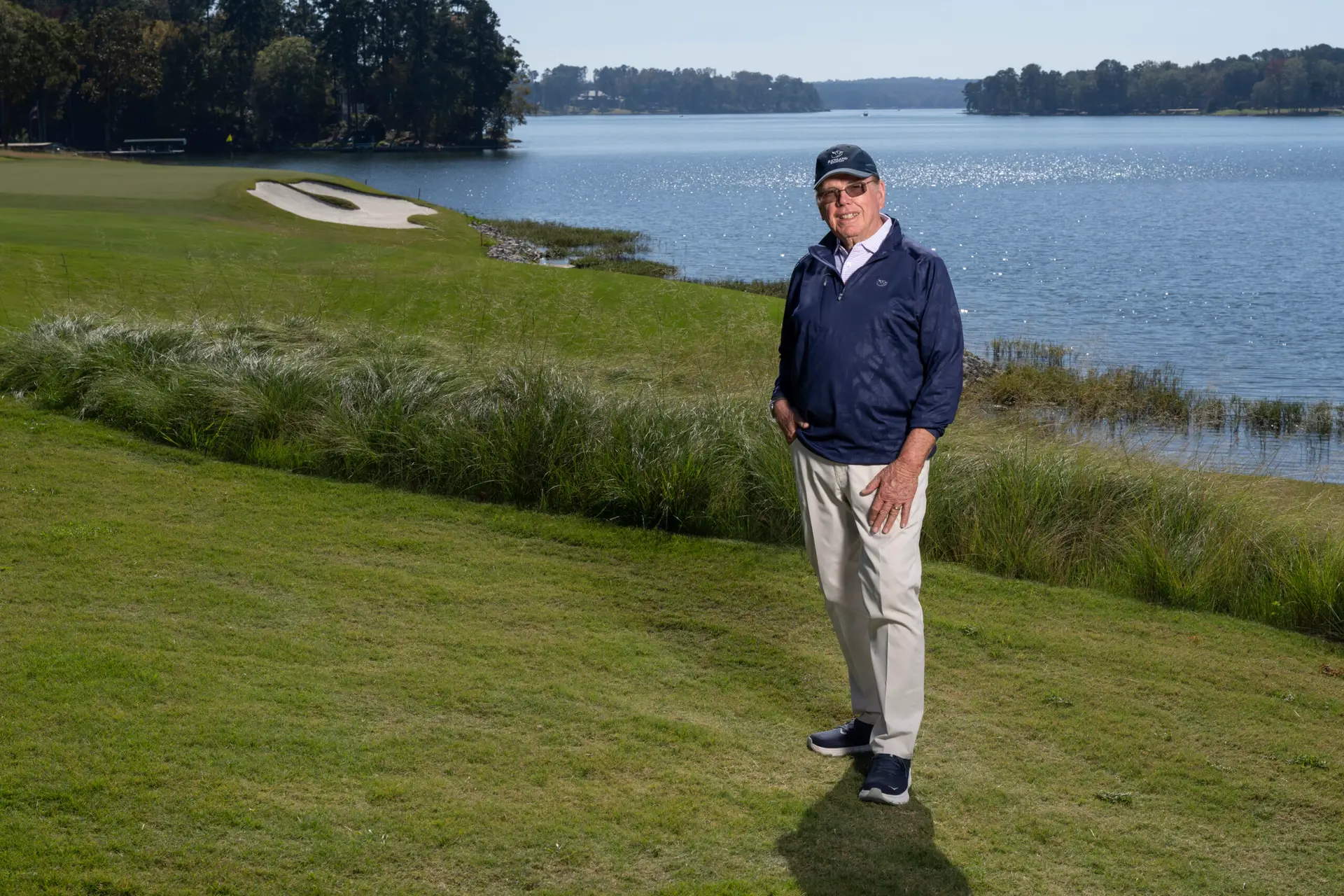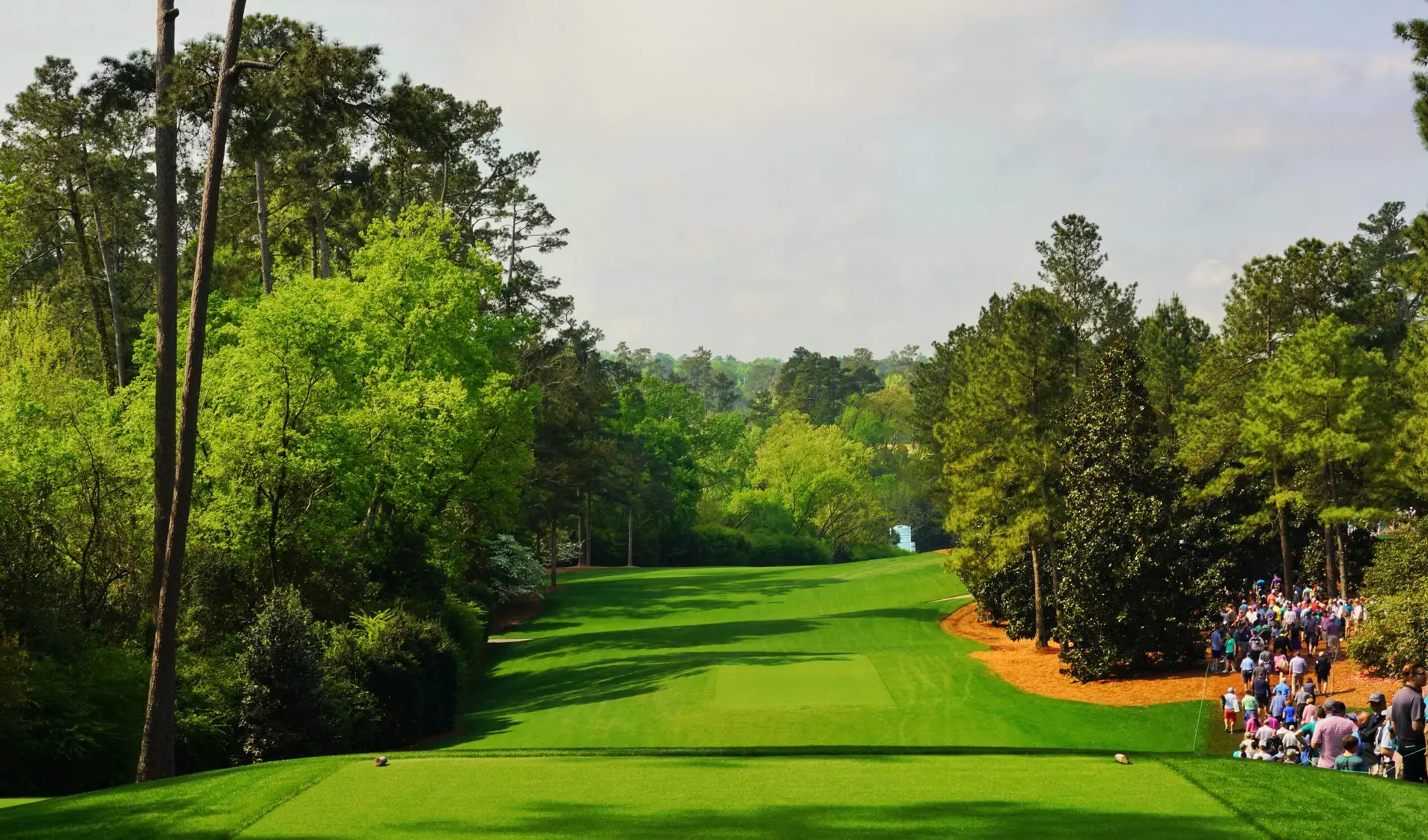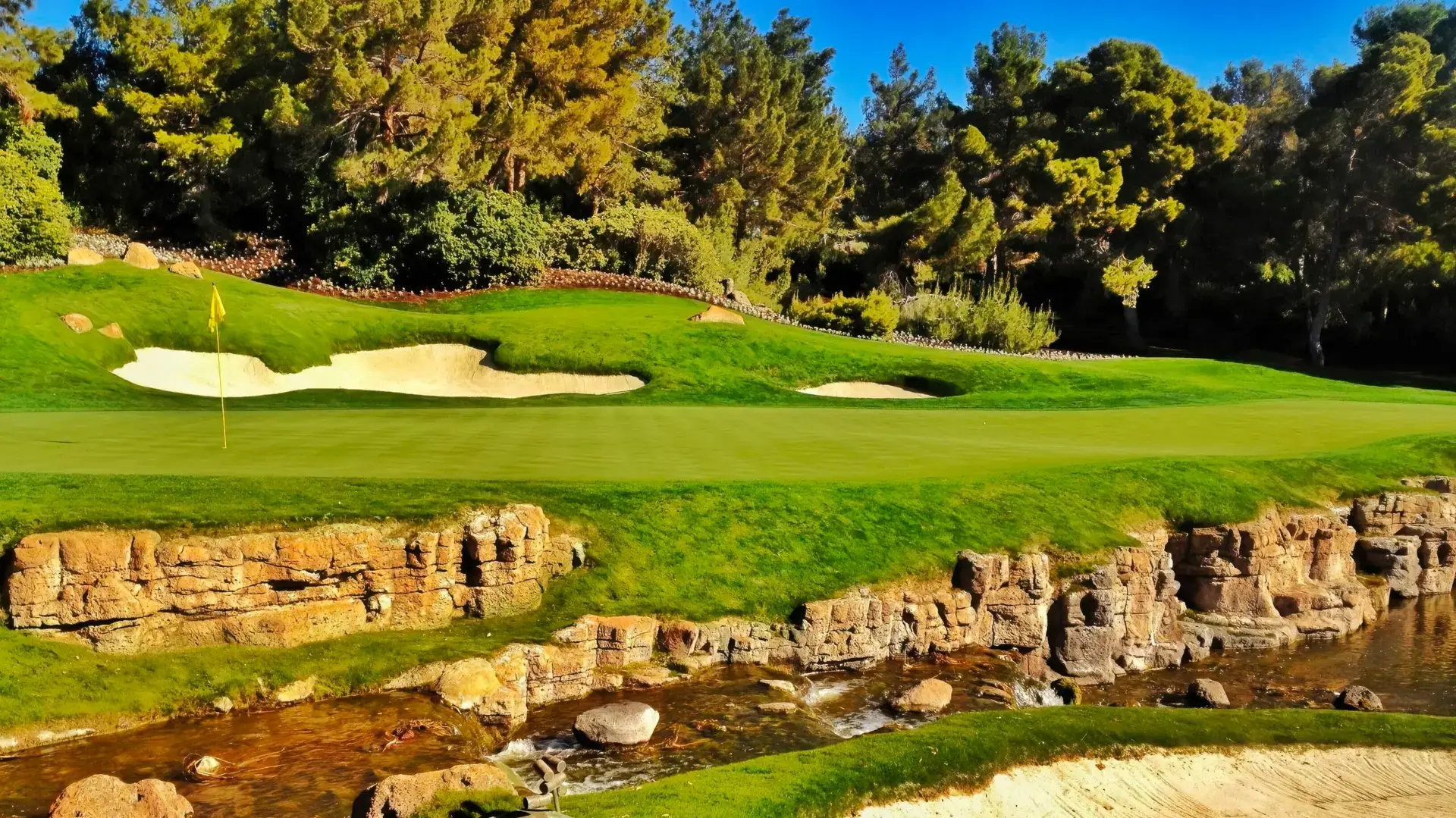Tom Fazio has dominated the last six decades of golf architecture
Tom Fazio just turned 80, yet he remains as ubiquitous as anyone in the design business. He continues to be the consulting architect for Augusta National. Since 1997, he has guided the transformation and evolution of Charlotte’s Quail Hollow, site of the 2025 PGA Championship. He has presided over design updates at top-ranked Pine Valley for decades. Last fall, he opened the Richland course at Georgia’s Reynolds Lake Oconee, and he currently has projects under construction in Italy, Dubai, Florida, Colorado, and Montana. Retiring? Tom Fazio isn’t even slowing down.
“What keeps me going is a sense of accomplishment,” Fazio told LINKS in a recent interview. “You’re only as good as what you’ve done lately. If I stopped working, I could live on the laurels of what I’ve done. But as long as we’re building something new, you’ve got to stay on top of it and make it the best it can be. And that’s what I intend to do. I like it and it’s fun.”

A NAME OF HIS OWN
After toiling with his uncle George Fazio since 1962—when he was 17 years old—it was Tom alone who made news late in the following decade with prize-winning solo designs Wild Dunes (1979), near Charleston, S.C., and the Vintage Club (1980), outside of Palm Springs.
Wild Dunes featured marsh-front settings, massive interior sand dunes, and a finish along the Atlantic Ocean. It leapfrogged into GOLF Magazine’s Top 50 Courses in the World soon after opening. The Vintage Club’s Mountain course used mounds, grass bunkers, desert flowers, and holes that practically melted into Eisenhower Mountain. The road ahead for Tom Fazio looked like a smooth stretch of the Autobahn. A gaping pothole, however, nearly wrecked his ride.
As with elite architects in every era, the Fazios took on their fair share of renovation jobs in the 1970s. Among them were revising Toledo, Ohio’s, Inverness Club and adding four new holes ahead of the 1979 U.S. Open, and revising and adding three new holes at Rochester, N.Y.’s, Oak Hill (East) prior to the 1980 PGA Championship. Intending to create more space for gallery flow and boost the challenge for modern pros, Fazio’s efforts fell flat among course critics and players alike. The new holes blended poorly with the old ones. Raymond Floyd voiced a memorable zinger regarding the changes to Oak Hill: “If I owned a Rembrandt, I don’t think I’d go slapping on some reds and yellows just because it was kind of dull.”
The barbs stung young Fazio. Outside of tweaks to Pine Valley and Winged Foot, it would take 15 years before he jumped back on the renovation train. The positive reception to his changes at North Carolina’s Quail Hollow, beginning in 1997, and at Ireland’s Waterville in 2006 ushered in a long run of mostly well-received re-dos. Nevertheless, what Tom Fazio wants to do—likes to do—is bring original course designs to life, and for 30 years, from 1979 through 2009, no one did it more successfully.

THE GOLDEN AGE
Thirty different courses from a Fazio Design portfolio of more than 200 original projects have landed on Golf Digest’s America’s 100 Greatest Courses list over the years. Late 1980s award-winners such as North Carolina’s Wade Hampton and Florida’s Black Diamond Ranch (Quarry) notwithstanding, nothing elevated the Fazio brand higher than his magical feat at Shadow Creek in North Las Vegas.
Shadow Creek formally debuted in 1990 and it rocked the world of golf course architecture on a scale comparable to Pete Dye’s TPC Sawgrass 10 years earlier. If Sawgrass was Dye’s ne plus ultra for creating the ultimate risk/reward tournament test from an unfathomably inhospitable swamp, Fazio went one better. He took a completely featureless square of flat, raw desert, created an entire environment, then draped spectacular, strategically compelling golf holes into that environment. Equal parts Florida, North Carolina, and Colorado, and splashed with mature pines, colorful flower beds, babbling creeks, and mountain backdrops, Shadow Creek was a singular achievement. Yes, it was artificial—but, so what, proponents argued. It was stunning. With Shadow Creek, Fazio proved that with enough imagination and money, an architect could build any course he wanted on any site.
Shadow Creek’s allure was propagated by the difficulty in getting aboard: Only Fazio’s client, Steve Wynn, CEO of The Mirage Hotel, could greenlight a tee time. It immediately catapulted into Golf Digest’s Top 10 Courses in the U.S., inspiring both awe and furor.
For the next 15 years, Fazio repeatedly struck gold. Upscale real estate developments were booming and every developer wanted him. Honors piled up for projects across the U.S. Amid all that success, however, came criticism. Pundits pouted that Fazio’s original designs had become cookie-cutter. They cited his lack of respect for the Golden Age architects of the 1920s when he renovated, rather than restored, their golf courses. They decried the absence of quirk on any of his designs and derided the lack of strategic interest in many of his layouts. And they disparaged him for the huge budgets he commanded and for failing to create courses that sufficiently justified the budget.

Poppycock—or words to that effect—says Richard Mandell, the Pinehurst, N.C.-based golf course architect and author. “At the time Fazio was dominating the rankings, nobody was really hearkening back to the Golden Age with template holes and green complexes. His design style was certainly rooted in Golden Age architecture. You could see that in how he routed his golf courses, even if they were part of a residential development. He was doing what the client wanted. For any architect to scoff at Fazio back then, up until 2010, it was just pure jealousy.”
THE FAZIO WAY
Why has Tom Fazio’s brand of architecture been so popular for so long among developers, home buyers, and course ranking panelists? Conventional wisdom holds that Fazio conjures up the best-looking courses in the business, even if the original land appeared unsuitable for golf. Mostly he’s built “non-championship” courses that have perfect flow, balance, and landscaping, with gracefully shaped contours and clear, attractive framing devices, such as big, bold bunkers. A truly player-friendly architect, he avoids using perpendicular hazards or severe trouble to the right side wherever possible.
“Fazio can take a site that had no business having a golf course on it and make it look like a comfortable fit,” says architect Ken Kavanaugh. “That may mean moving millions of yards of dirt and spending crazy amounts of money, but he does it in such a way as to make it look natural. He might be the best of all time at making maximalism look like minimalism.”
Aesthetic appeal is prominent in the Fazio success formula. You don’t need to be an architecture scholar to know eye candy when you see it.
“The popularity of his work comes directly from the beauty of his courses,” says Gil Hanse. “Whether it is in the landscapes he has created or how he has embellished the natural beauty of the site, people love to be on his golf courses. There is a balance in his designs, they are fun to play, and most importantly there is a feeling of comfort in the sense of place that he has created.”

Nonetheless, it’s playability that makes or breaks a golf course. How well does the golf course test and entertain the good golfer without overly frustrating the lesser player? That’s the truest test for a course’s appeal and acceptance.
“Playability is the most important factor to every golf course,” says Fazio. “Width is more important than length every time. Now, a golf course can be boring if it’s too wide. Our goal is to put the width where the majority of high handicappers need it. In blending challenge with playability, we try to be astute about the placement of hazards. It’s easy to set up a golf course for the Tigers or Rorys. But the higher your handicap, the more you play on the ground. So when the ball’s on the ground, where’s it going? We focus on that golf ball, where it’s rolling to, where the relief is, where you have your options to play. We give them space to move the ball around and play it.”
Discovery Land Company has enlisted Fazio to design courses for 29 of its projects, with more on the way. “Tom Fazio is the best golf course architect because his designs are beautiful, picturesque, and very playable,” says DLC founder and chairman Mike Meldman. “He also understands the critical relationship between the golf and the homesites. He understands perfectly what our members want.”
INFLUENCE AND LEGACY
In the current age of the minimalists, where a light touch on the land, firm-and-fast conditions, and an excessive reverence for Golden Age architecture dominate rankings and conversations, it’s almost refreshing that Fazio’s firm is still kicking out gorgeous, popular layouts. Now that he’s turned 80, it’s a worthy exercise to analyze and celebrate what he has brought to golf and golf course design.
“There has been no one better in the creation of landscapes for golf than Tom Fazio,” says Hanse. “His ability to see a vision where none exists, to do so with a sense of scale, definition, and purpose, is unmatched. He also has had the temerity to finish these creations with a high level of maturity in the plant materials and landscaping he selected, which provides the exclamation point to his work.”

Phoenix-based architect Forrest Richardson looks at Fazio’s oeuvre and commends him for being anything but cookie-cutter. “Fazio has never been afraid to create holes that pushed the envelope of being nearly impossible to build,” he says. “The 3rd hole at Ventana Canyon’s Mountain course in Tucson is a great example. [Ed. note: The short par three crosses a rocky, cactus-filled canyon from a tiny elevated tee to a green notched into a mountain ledge.] Tom’s team had a vision, and it was going to get done one way or the other. That philosophy often gets lost on the ‘less is more’ crowd. Tom knows when to dig in, and he’s proven that time after time. Shadow Creek is another example. Two words: Bold ideas.”
Where does Tom Fazio rank among history’s greatest architects? As with tournament golfers, golf’s elite designers can be compared only within the era they performed. Among modern architects, certainly from the earth-moving era of 1975–2005, Tom Fazio ranks near the top of the class and is a consensus No. 1 when it comes to residential community courses. By any standard, that’s a first-ballot Hall of Famer.







The Fazio Family of distinguished architects (George, Tom, Jim, and Tommy) has certainly left its mark on golf course design, as has the Jones Family (Robert Trent, RT II, and Rees). Excellent piece on Tom and his legacy.
Great article and a deserved one. Notwithstanding his fabulous career, Fazio has occasionally been poorly treated by segments of the golf cognoscenti. What other great modern architect has seen one of his best courses plowed under (World Woods Pine Barrens) by a new developer in Florida? Imagine if someone did that to one of Coore/Crenshaw’s great designs. Fazio’s courses are always extremely well thought and a delight to experience. And dozens are truly outstanding.
Day in, day out, he’s every club member’s favorite architect, so much so than several clubs have written into their documents that no changes or significant alterations to the course may be made without his input and approval.